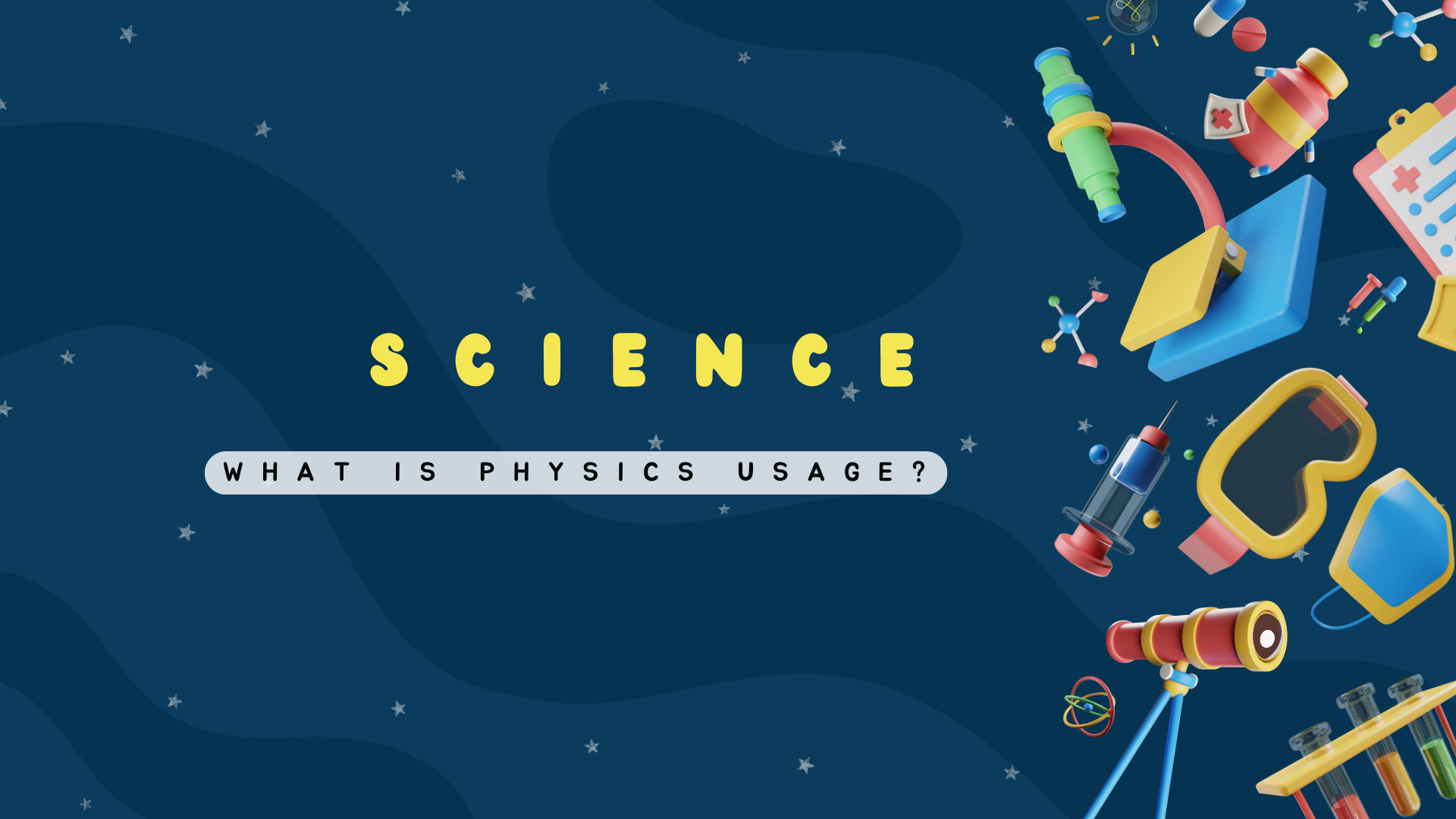Physics, the fundamental science of nature, seeks to understand the behavior of the universe at every scale—from the tiniest particles to vast cosmic structures. It's a discipline that has shaped our understanding of the world, underpinning technological advancements and contributing to the philosophical ponderings about the nature of reality. This article delves into the core areas of physics: its fundamental principles, quantum mechanics, optics, and photonics, providing insights into how these fields contribute to our understanding of the physical world.
The Fundamentals of Physics

At its core, physics is concerned with the basic principles that govern the universe. It's divided into classical and modern branches, each focusing on different phenomena but interconnected by the quest to understand the laws of nature. Classical physics, established by figures like Newton and Maxwell, deals with macroscopic phenomena such as motion, forces, energy, and electromagnetism. Its laws describe the behavior of objects from the scale of apples to planets, offering insights into mechanics, thermodynamics, and electromagnetism.
Modern physics, on the other hand, emerged in the early 20th century, addressing phenomena classical physics could not explain. It includes relativity, which expands our understanding of space, time, and gravity, and quantum mechanics, which reveals the bizarre and counterintuitive behaviors of particles at the smallest scales.
Quantum Mechanics: The Realm of the Tiny
Quantum mechanics is a pillar of modern physics that describes the behavior of particles at the atomic and subatomic levels. It introduces concepts like wave-particle duality, uncertainty principle, and quantum entanglement, challenging our classical notions of reality. In quantum mechanics, particles can exist in multiple states simultaneously (superposition) and affect each other instantaneously over vast distances (entanglement), forming the basis for technologies like quantum computing and quantum encryption.
Optics: The Science of Light
Optics, a branch of physics, focuses on the study of light and its interactions with matter. This field explores the properties of light, including its transmission, reflection, refraction, and dispersion. Classical optics, grounded in wave theory, explains phenomena such as the rainbow's formation and the operation of lenses. Modern optics, however, incorporates quantum theories to explain the dual nature of light, leading to innovations in laser technology, fiber-optic communications, and medical imaging.
Photonics: Harnessing Light
Photonics is an advanced area of study that emerged from optics, concentrating on generating, controlling, and detecting photons—the fundamental particles of light. It intersects with electronics and quantum mechanics, leading to the development of devices like semiconductor lasers, light-emitting diodes (LEDs), and photovoltaic cells. Photonics is pivotal in telecommunications, information processing, and sensing technologies, driving advancements in high-speed internet, solar power, and optical computing.
The Interconnectedness of Physics
The beauty of physics lies in its interconnectedness, where discoveries in one area often lead to breakthroughs in another. For instance, quantum mechanics has not only deepened our understanding of the atomic world but also paved the way for quantum computing, which promises to revolutionize information processing. Similarly, advancements in photonics have led to improvements in telecommunications, medical imaging, and even quantum encryption.
The Impact of Physics on Technology and Society
Physics is not just a theoretical pursuit; it has practical applications that impact our daily lives and the technology we use. From smartphones and GPS systems to MRI machines and renewable energy sources, physics-based technologies have become integral to modern society. Moreover, physics challenges us to think deeply about the universe, encouraging a sense of wonder and curiosity about the natural world.
The Future of Physics
As physics continues to evolve, it promises to unveil more about the universe, potentially leading to new technologies and deeper insights into the nature of reality. Fields like quantum computing and photonics are on the brink of breakthroughs that could transform information technology, energy, and medicine. Furthermore, interdisciplinary research, combining physics with biology, chemistry, and engineering, is likely to solve complex problems like climate change and sustainable energy production.
What is Physics Usage?
Physics, as the fundamental science of energy, matter, and their interactions, has an extensive range of applications in various fields. Its principles underpin the technological advancements that drive modern society, revolutionizing industries, shaping our understanding of the universe, and improving our quality of life. Here’s an overview of some key areas where physics is applied:

1. Technology and Engineering
Physics is the backbone of all engineering disciplines. It provides the principles for the design, construction, and optimization of machines, structures, and electronic devices. For instance, principles of thermodynamics are crucial for designing more efficient engines and refrigeration systems. Semiconductor physics is fundamental to the development of electronic devices such as smartphones, computers, and solar cells.
2. Medicine
Medical physics applies physics concepts, theories, and methods to medicine. Technologies like magnetic resonance imaging (MRI), computed tomography (CT scans), and X-rays are based on principles of physics and have revolutionized diagnostic medicine. Radiation therapy, a common treatment for cancer, uses high-energy radiation to target cancer cells, a technique developed from nuclear physics.
3. Information Technology and Computing
The principles of quantum mechanics are being harnessed to develop quantum computing, which has the potential to revolutionize data processing by performing complex calculations at speeds unattainable by classical computers. Photonics, the study of light-based technologies, is pivotal in advancing optical communications and data storage technologies, leading to faster and more efficient internet and computing systems.
4. Energy
Physics plays a critical role in the exploration and development of renewable energy sources, such as solar, wind, and nuclear power. The design and optimization of solar panels, wind turbines, and nuclear reactors all rely on principles of physics to enhance efficiency and safety. Additionally, physics is central to understanding and addressing climate change, as it provides the foundation for modeling climate systems and the effects of greenhouse gases.
5. Transportation
Advancements in transportation technology, from electric vehicles to high-speed trains and aerospace engineering, are deeply rooted in physics. Aerodynamics, a branch of physics, is essential for designing vehicles that can move more efficiently through air or water. Electric vehicle technology relies on electromagnetism and materials science to develop more efficient batteries and motors.
6. Environmental Science
Physics contributes to environmental monitoring and protection by offering tools and technologies for measuring atmospheric conditions, pollution levels, and radiation. It also provides insights into natural processes and phenomena, such as the greenhouse effect and the dynamics of ecosystems, which are crucial for developing sustainable practices and mitigating environmental impacts.
7. Entertainment
In the entertainment industry, physics enhances the realism of video games and movies through computer graphics and simulations that accurately depict motion, lighting, and physical interactions. Technologies such as virtual reality (VR) and augmented reality (AR) also rely on optics and mechanics to create immersive experiences.
8. Space Exploration
Physics is fundamental to understanding celestial phenomena and the laws governing the universe, which is essential for space exploration. It enables the design of spacecraft and satellites, navigation through space, and the analysis of data collected from space missions to study planets, stars, and galaxies.
Physics is not just an academic discipline; it's a critical tool that drives innovation and addresses some of the most pressing challenges facing humanity. From enhancing technological capabilities to improving healthcare, conserving the environment, and expanding our knowledge of the universe, the applications of physics are vast and deeply integrated into the fabric of our society.
Physics in Education
Physics education plays a vital role in nurturing a foundational understanding of how the universe operates, equipping students with the skills to solve complex problems, think critically, and innovate. It forms an essential part of the curriculum from primary education through to higher education, emphasizing not only the accumulation of knowledge but also the development of scientific thinking and practical skills. Here’s a closer look at the importance and implementation of physics in education across various levels.

Primary and Secondary Education
In primary and secondary education, physics introduces students to basic concepts like motion, energy, and forces, along with fundamental principles that govern the natural world. The curriculum is designed to:
- Spark Curiosity: Early exposure to physics helps ignite curiosity about the world around students, encouraging them to ask questions and seek answers about physical phenomena.
- Develop Scientific Literacy: Understanding basic physics concepts is crucial for scientific literacy, enabling individuals to make informed decisions and understand scientific issues that impact society, such as climate change and renewable energy.
- Cultivate Problem-Solving Skills: Physics education emphasizes critical thinking and problem-solving, teaching students how to apply scientific principles to solve real-world problems.
- Foundation for Advanced Studies: For students who pursue higher education in science, technology, engineering, and mathematics (STEM) fields, a strong background in physics is indispensable.
Higher Education
In colleges and universities, physics education delves deeper into both classical and modern physics, covering advanced topics such as quantum mechanics, thermodynamics, electromagnetism, and materials science. Physics majors and non-majors alike benefit from physics education in several ways:
- Research and Innovation: Advanced physics education is essential for students who wish to engage in research, contributing to technological innovations and scientific discoveries.
- Interdisciplinary Applications: Physics principles are fundamental to a range of fields, including engineering, chemistry, biology, environmental science, and medicine. For instance, biophysics, astrophysics, and geophysics are interdisciplinary areas that apply physics concepts to solve specific problems in biology, astronomy, and earth science, respectively.
- Career Preparation: A physics education prepares students for a wide range of careers, from academia and research to industry roles in aerospace, telecommunications, energy, and beyond. The analytical and quantitative skills gained from studying physics are highly valued in many professions.
Educational Methods and Technologies
The teaching of physics has evolved significantly, incorporating a variety of methods and technologies to enhance learning:
- Experimental and Hands-on Learning: Laboratories and hands-on experiments are integral to physics education, allowing students to observe phenomena and apply theoretical knowledge in practical settings.
- Simulation and Modeling: Digital simulations and modeling tools enable students to explore complex concepts and systems that are difficult to observe directly, such as atomic structures or celestial mechanics.
- Online Learning and MOOCs: Massive Open Online Courses (MOOCs) and other online platforms provide access to physics courses from basic to advanced levels, making physics education more accessible to a global audience.
- Collaborative Learning: Group projects and collaborative research encourage teamwork and communication skills, preparing students for collaborative work in their future careers.
Challenges and Opportunities
While physics is a fundamental and enriching subject, it also presents challenges in education, including perceived difficulty and lack of engagement. Addressing these challenges involves making physics relevant to students' lives, incorporating real-world applications, and using innovative teaching methods to make learning interactive and engaging. Furthermore, promoting diversity and inclusion in physics education is crucial to broadening participation in STEM fields, ensuring that students from all backgrounds have the opportunity to pursue physics and contribute to scientific advancement.
Physics in education is crucial for developing a scientifically literate society, fostering innovation, and preparing students for careers in a wide range of fields. By adopting diverse and engaging teaching methods, educators can inspire the next generation of physicists, engineers, and informed citizens, ready to tackle the challenges of the future.
Physics in Science
Physics is often referred to as the "fundamental science" because it is the foundation upon which other scientific disciplines are built. Essentially, physics seeks to understand the underlying principles that govern the natural world, from the smallest subatomic particles to the vastness of the universe. Its role in science is multifaceted, providing the theoretical framework and experimental methods that underpin various fields of study. Here's a deeper look into how physics integrates with and supports other scientific disciplines.
Foundation of Natural Sciences
- Chemistry: Chemistry and physics are deeply interconnected, with the former often considered a branch of physical science. Quantum mechanics, a pillar of modern physics, explains the behavior of atoms and molecules, laying the groundwork for understanding chemical bonding, reaction dynamics, and material properties.
- Biology: Biophysics applies the principles of physics to biological systems, explaining how organisms move, how energy is used by cells, and how complex systems like the brain function. Techniques developed through physics, such as microscopy and medical imaging, have become indispensable tools in biological research and diagnosis.
- Earth Science: Physics principles are crucial in understanding geological processes, atmospheric dynamics, and climate change. For example, the study of plate tectonics, ocean currents, and the greenhouse effect all rely on understanding heat transfer, fluid dynamics, and other physical processes.
- Astronomy and Astrophysics: These fields are essentially applications of physics to celestial bodies and the universe as a whole. The laws of gravity, motion, thermodynamics, and nuclear physics explain the life cycle of stars, the structure of galaxies, and the evolution of the universe.
Technological Advancements
Physics drives technological innovation, leading to developments that have transformed society. For instance:
- Electronics: Semiconductor physics has led to the development of transistors, integrated circuits, and all modern electronics, including computers and smartphones.
- Energy: Advances in nuclear physics have paved the way for nuclear power, while the study of thermodynamics and electromagnetism supports the development of renewable energy technologies.
- Materials Science: The understanding of atomic and molecular structures in physics has led to the creation of new materials with specific properties, impacting engineering, manufacturing, and nanotechnology.
Interdisciplinary Fields
Physics forms the foundation of many interdisciplinary fields, showcasing its versatility and importance in advancing scientific knowledge and solving complex problems:
- Environmental Science: Physics principles are used to model climate systems, understand renewable energy sources, and assess the impact of human activities on the environment.
- Medical Physics: This field applies physics to medicine, developing techniques for diagnosis (e.g., X-rays, MRI) and treatment (e.g., radiation therapy) of diseases.
- Engineering: All branches of engineering (mechanical, electrical, civil, aerospace, etc.) are based on physical principles, applying them to design, construct, and maintain infrastructure, machinery, and technology.
Fundamental Questions and Future Challenges
Physics continues to address some of the most fundamental questions about the nature of the universe, such as the origins of matter and the fundamental forces that govern the cosmos. It also plays a critical role in addressing future challenges, including sustainable energy, climate change, and the development of quantum computing.
In summary, physics is integral to science, providing the foundational principles that explain natural phenomena and the universe itself. Its applications permeate all scientific disciplines, leading to technological innovations and interdisciplinary fields that tackle complex questions and global challenges. Physics not only enriches our understanding of the world but also drives progress across the scientific spectrum.
Conclusion
Physics stands as the cornerstone of our understanding of the natural world, weaving together the fabric of the universe through its fundamental principles and laws. Its profound impact stretches across all realms of science, from the infinitesimal particles that compose matter to the vast expanses of the cosmos. Through its intricate relationship with other disciplines, physics not only elucidates the fundamental mechanisms of nature but also drives innovation and technological advancement, addressing some of humanity's most pressing challenges.
In education, physics serves as a crucial pillar, fostering critical thinking, problem-solving skills, and a deep appreciation for the marvels of the universe. It prepares students not just for careers in science and engineering but for a lifetime of inquiry and discovery. As we venture further into the unknown, physics will continue to light the way, offering insights into the mysteries of the universe and enhancing our ability to harness the laws of nature for the betterment of society.
The interdisciplinary nature of physics underscores its significance in tackling complex problems, from climate change and sustainable energy to healthcare and information technology. It demonstrates how a fundamental understanding of physical principles can lead to groundbreaking innovations in diverse fields such as medical physics, environmental science, and materials science.
As we stand on the brink of new scientific frontiers, from quantum computing to exploring the depths of space, the role of physics has never been more critical. It is the engine of innovation and discovery, pushing the boundaries of what is known and expanding the horizons of human knowledge and capability.
In conclusion, physics is not merely a branch of science; it is the backbone of our quest to understand reality. It challenges our perceptions, fuels our technological progress, and inspires wonder and curiosity about the universe. As we continue to explore the intricacies of the cosmos and the minutiae of subatomic particles, physics remains our most powerful tool in the ongoing journey of discovery, a testament to the human spirit's insatiable desire to uncover the secrets of existence.


 English
English 
